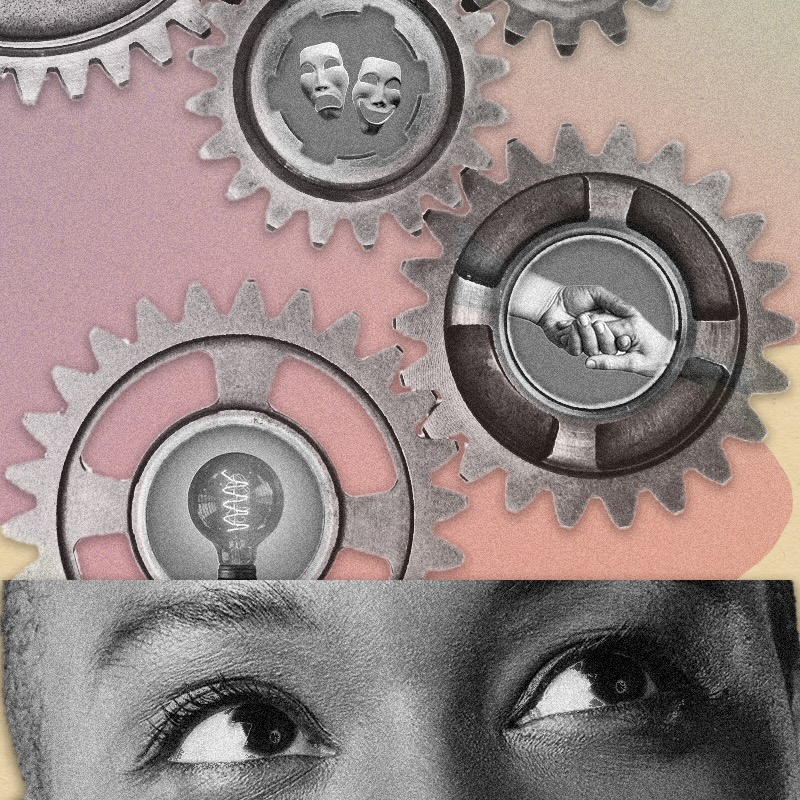Walk the mental health walk
Three steps to create a mentally healthy team.

This is the first segment of a three-part series with Morra Aarons-Mele on how to model, talk about, and plan for mental health in order to cultivate stronger and healthier teams. In this article, Morra addresses how managers can model positive practices in the workplace.
According to the 2021 State of Workplace Mental Health report, employees’ most desired resource is an “open culture” about mental health at work, and employees’ most common obstacle to self-care was leaders not promoting mental health at work. The 2021 Mind the Workplace report, which assessed workers’ mental health challenges during the Covid-19 pandemic, found that nine in ten workers say their workplace stress affects their mental health, four in five feel emotionally drained from their work, and only two in five are receiving adequate help from their supervisors to help manage workplace stress. This is compounded by the fact that close to half of us are worried about retaliation or being fired if we seek mental health services or take time off for mental health.
National Opinion Poll
According to a new national opinion poll from the American Psychological Association, 48% reported being worried about retaliation or being fired if they sought mental health services and 43% reported worried about the ramifications for taking time off for mental health.
Many of us may find it easy to describe an unhealthy or toxic workplace — the experience is pretty unmistakable. But what exactly are we talking about when we say we want mentally healthy workplaces, or workplaces that support our mental health? Though the particulars will look a little different from organization to organization, mentally healthy workplaces aren’t afraid to talk about mental health: to name it, acknowledge it, and take it seriously. They integrate discussions and practices around preserving employee mental health — every day. When these conversations happen, fears and anxiety around disclosing struggles diminish too.
Mentally healthy workplaces aren’t afraid to talk about mental health:
![]() to name it, acknowledge it, and take it seriously.
to name it, acknowledge it, and take it seriously.
I’m going to share two ways to help your team become more mentally healthy that don’t require any policy changes or investment in providers or benefits (although those are important!).
If you want to see it, be it.
(It’s cliche because it’s true)
How’s your mental health? Leaders are people too, and chances are that you’re carrying a heavy burden right now. Are you ready to talk about mental health with your team because you’re suffering? This is a valid reason.
Before you start, organizational psychologist and author of Yes, You Can Talk About Mental Health at Work Melissa Doman suggests you first examine your own beliefs about mental health and mental illness before bringing it up. Where do those beliefs come from? Are you actually ready to talk about this, and how much do you want to share? Are you ready to participate in this conversation? What do you want to accomplish by raising this with your team?
If you can tell your team is under stress, it’s even more important that you share about your own. It’s all too common for leaders to act out their anxiety through intense or micro-management and overwork — making the team more anxious. Have you been managing with more intensity and attention to detail than before? Chances are your reports know you’re struggling even if you haven’t said anything. Maybe it’s time to acknowledge the effects stress is having on your management style, and share with your team.
We’re all human — Let’s act like it.
When leaders share even “just a bit of their personal challenges,” Kelly Greenwood, CEO of Mindshare Partners told me in an interview, “that lets people feel so much more comfortable revealing their own challenges. We find that people really just need a very small opening to feel comfortable in having those conversations, [and] in asking for help when they find that their leaders aren’t completely perfect themselves.” An advocate from leadership puts a human face on the issue, Greenwood said, and gives people permission to have conversations about mental health at work.
If you’re struggling with your mood but feel nervous about admitting it to your team, keep it simple. While it’s very powerful to admit “I’m feeling anxious today” you could share something like, “I didn’t sleep well” or, “wow, I’m so over COVID. This is hard — can we talk about it?”
The prevailing culture of your office will affect how you begin to talk about mental health. Think about how you generally talk about emotions, motivation, energy, and mood with your colleagues. Is your office culture hard-driving, or “rah rah”? Does your team feel like they have to be okay all the time? Are you the kind of leader who never takes a sick day or shares about a sleepless night? Much of modern motivational leadership culture is relentlessly focused on the positive: Just do it, crush it… you’ve read the mugs and seen the posters.
While many people can find positive performance culture motivating,
![]()
it can have a negative impact on employees who are struggling to manage their mental health.
If your office culture is always “on,” simply acknowledging that you’re not firing on all cylinders can be a transformative move for your team. It opens the door for more authentic, vulnerable conversations and ultimately, more conversations about mental health. If you’re not ready to talk, walk the walk by shutting down email at 6pm, and not answering at night or on the weekends, or put an out-of-office signature on your email stating your core hours and explaining you won’t be answering email outside of them. Simple actions make big statements.![]()







